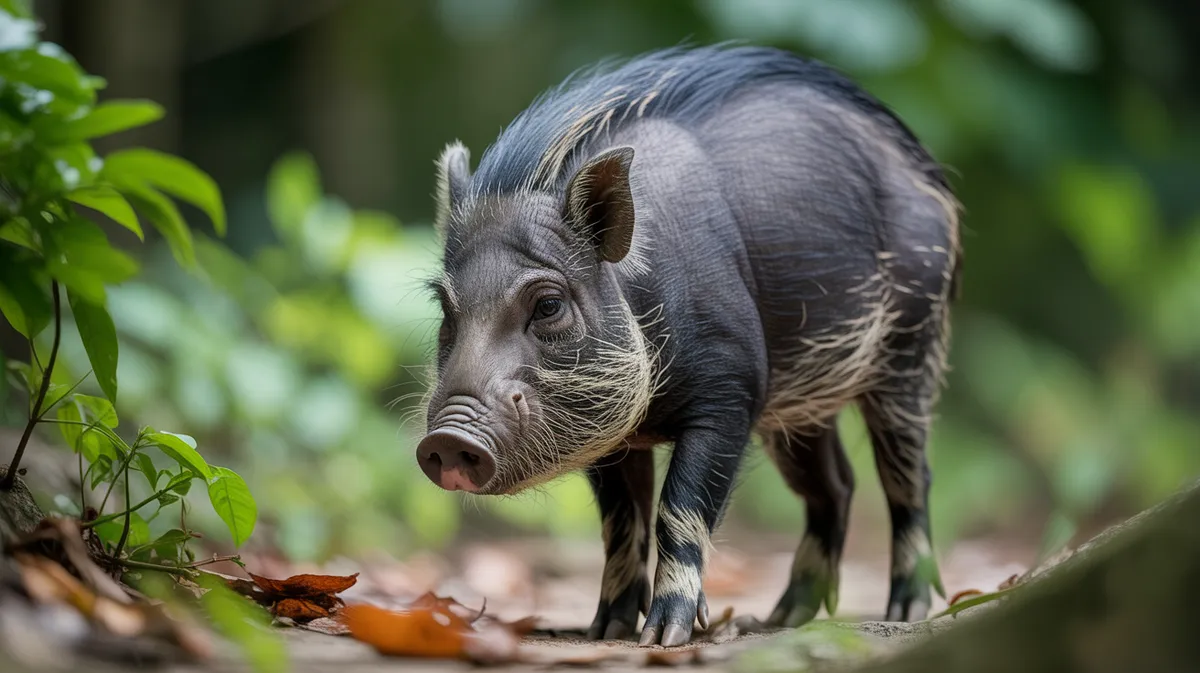
Visayan Warty Pig
Sus cebifrons
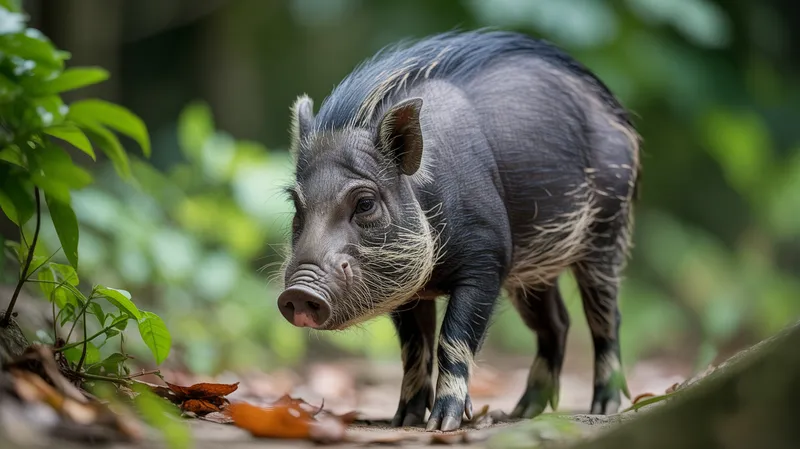
Meet the Visayan Warty Pig
The Visayan Warty Pig is a critically endangered wild pig species native to the Visayan Islands of the central Philippines. Recognizable by the three pairs of fleshy facial warts and a distinctive tufted mane in males, it is smaller than other wild pig species. These pigs are highly social, forming small family groups that forage together for food in dense forests. Due to extensive habitat loss and hunting, their populations have drastically declined, leaving only a few isolated groups in the wild.
Classification
Mammal
Habitat
Tropical forest
Diet
Omnivore
Lifespan
10-15 years
Conservation
Critically Endangered
Weight
20-40 kg
📖Fascinating Facts
Distinctive Males
Male Visayan Warty Pigs sport a long, spiky mane that can stand up during displays and the breeding season.
Forest Dwellers
They inhabit only a few scattered patches of lowland and montane forests on the islands of Negros and Panay.
Critical Threats
Habitat destruction, hunting, and genetic dilution from hybridization with domestic pigs are major threats to their survival.
📋Detailed Description
The Visayan warty pig (Sus cebifrons) is a small to medium-sized wild pig, with adults typically measuring 100–130 cm in length and weighing between 20–40 kg, though males are generally larger than females. Males are easily distinguished by three pairs of fleshy facial warts, which are thought to provide protection during fights, and by a prominent crest of long, dark hair forming a mane that becomes especially pronounced during the breeding season. Their coat is generally dark gray to black, with sparse bristly hair and a lighter underbelly. The species exhibits a robust, compact body with relatively short legs, well-suited for maneuvering through dense undergrowth. Visayan warty pigs are highly social, forming matriarchal groups called sounders, typically consisting of related females and their offspring, while adult males are more solitary or join groups during the breeding season. They are primarily crepuscular, being most active at dawn and dusk, and are known for their intelligence and adaptability. Their omnivorous diet includes roots, tubers, fruits, invertebrates, and occasionally small vertebrates, and they play a crucial ecological role as seed dispersers and soil aerators. The species is endemic to the Visayan Islands in the central Philippines, with remnant populations surviving only on Panay and Negros islands due to extensive habitat loss elsewhere. Their vocalizations include grunts, squeals, and growls used for communication within the group and to warn of danger. Lifespan in the wild is not well-documented but is estimated at 10–15 years, with individuals in captivity sometimes living longer.
💡 Did you know?
Visayan Warty Pigs sometimes hybridize with domestic pigs, which threatens the genetic purity of the wild population.
🔬Research & Sources
Wikipedia Summary
The Visayan warty pig is a critically endangered species in the pig genus (Sus). It is endemic to six of the Visayan Islands in the central Philippines. It is known by many names in the region with most translating into 'wild pig': baboy ilahas, baboy talonon, baboy sulop, and baboy ramo.
Last Modified: 4/6/2025
🎭Behavior & Social Structure
Visayan warty pigs are highly social and display complex group behaviors. Sounders, usually composed of 4–12 individuals, are led by an older female and include her offspring and sometimes subordinate females. Adult males are generally solitary outside the breeding season but may join groups temporarily. These pigs communicate through a range of vocalizations, body postures, and scent marking. Foraging is a communal activity, with individuals rooting through leaf litter and soil using their strong snouts to uncover food. They are opportunistic feeders, adjusting their diet seasonally based on food availability. Daily routines include periods of foraging interspersed with rest in shaded wallows or dense vegetation, which also serve as protection from predators and heat. They are known to create and use mud wallows for thermoregulation and parasite control. When threatened, the group may freeze or flee, with adults sometimes displaying aggressive defensive behaviors, especially females with young.
👶Reproduction & Life Cycle
Breeding in Visayan warty pigs is seasonal, typically coinciding with the onset of the rainy season (May to August), which ensures abundant food for nursing mothers and piglets. Males compete for access to females, often engaging in ritualized displays and sometimes physical confrontations using their facial warts as protection. After successful mating, the gestation period lasts approximately 118–120 days. Females give birth to litters of 2–4 piglets, which are born with distinctive striped coats that provide camouflage in the forest undergrowth. The mother constructs a nest of leaves and grasses for the birth and early rearing of the young. Piglets are weaned at around 3–4 months but may remain with the mother for up to a year. Parental care is primarily provided by the female, who is highly protective of her young. Sexual maturity is reached at about 1–2 years of age.
🛡️Adaptations & Survival
The Visayan warty pig exhibits several adaptations to its forest environment. The compact body and short legs allow for agile movement through dense vegetation. The three pairs of facial warts in males serve as protection during intraspecific combat, particularly during the breeding season. The dark, bristly coat provides camouflage in the forest understory, while the piglets' striped pattern offers additional concealment from predators. Their strong, flexible snouts are specialized for rooting and foraging in the forest floor, facilitating access to underground tubers and invertebrates. Behavioral adaptations include group living for increased vigilance and cooperative defense, as well as the use of mud wallows for thermoregulation and parasite removal. Their omnivorous and opportunistic feeding habits enable them to exploit a wide range of food resources, an important trait in the fluctuating environments of the Visayan Islands.
📚Research Sources
🎨Cultural Significance
The Visayan warty pig holds cultural significance among local communities, reflected in various regional names such as 'baboy ilahas' (wild pig), 'baboy talonon', 'baboy sulop', and 'baboy ramo.' Traditionally, wild pigs have been hunted for food and are sometimes featured in local folklore and rituals, symbolizing strength and resilience. In some areas, the species is regarded as a pest due to crop raiding, which has contributed to negative perceptions and persecution. Conservation efforts increasingly involve community education and engagement, highlighting the pig's ecological importance and its status as a flagship species for forest conservation in the Visayas.
🔬Recent Research & Discoveries
Recent research on the Visayan warty pig has focused on population genetics, hybridization with domestic pigs, and the development of effective conservation strategies. Genetic studies have revealed significant loss of genetic diversity and evidence of introgression from domestic pigs, underscoring the urgency of in situ and ex situ conservation measures. Captive breeding programs, such as those at the Negros Forest Park and international zoos, have achieved some success in maintaining genetically viable populations. Ongoing ecological studies aim to better understand habitat requirements, movement patterns, and the species' role in forest regeneration through seed dispersal. Conservationists are also investigating the potential for habitat corridors and community-based management to enhance population recovery.
🎥Wildlife Videos

Stories from the Field: Husbandry and conservation of the Critically Endangered Visayan warty pig
Senior keeper at Bristol Zoo Shanika Ratnayake introduces you to the charismatic yet Critically Endangered Visayan warty pig, ...
Bristol Zoological Society
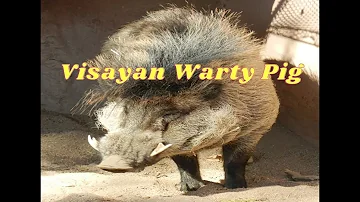
VISAYAN WARTY PIG
With a face only a mother could love, the Visayan Warty Pic is an endangered species. It is found on only two small islands in The ...
Animals Central
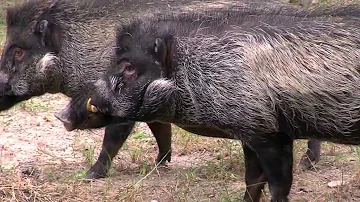
New Visayan Warty Pigs - Cincinnati Zoo
It's the first time out in their exhibit. The Visayan Warty Pig is a critically endangered animal from the Philippines.
The Cincinnati Zoo & Botanical Garden

Critically Endangered Visayan Warty Pigs
Visayan warty pigs, also known as Sus cebifrons, are a species of pig native to the Visayan islands in the Philippines. These pigs ...
Familiarity With Animals (FWA)
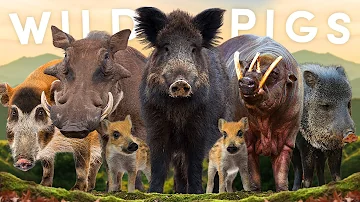
All 20 Wild Pig Species (& Their Piglets!)
Explore all 20 species of wild pigs, where they live and what makes them unique. This video includes both Old and New World ...
Textbook Travel
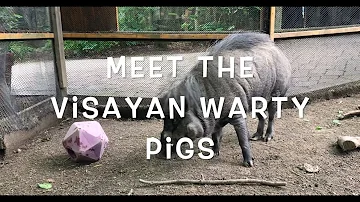
What's Moo at the Zoo? - Visayan Warty Pigs
A unique look behind the scenes at your Erie Zoo brought to you by Chick-fil-A Erie! It's your chance to see your favorite animals ...
Erie Zoological Society
🌍Habitat Information
The Visayan Warty Pig typically inhabits Tropical forest environments. Visayan Warty Pigs have adapted to their environments with specialized features and behaviors.
Primary Habitat:
Tropical forest
More detailed habitat information will be available soon.
🛡️Conservation Status
The Visayan Warty Pig is currently classified as Critically Endangered. Conservation efforts are crucial for preserving this species for future generations.
Common Threats:
- 🏠Habitat loss and fragmentation
- 🌡️Climate change impacts
- 🎯Hunting and poaching
- 🏭Human-wildlife conflict
⚠️Threats & Conservation Challenges
The Visayan warty pig faces severe threats from habitat loss due to deforestation, agricultural expansion, and human settlement, which have reduced its range to less than 5% of its historical distribution. Hunting for meat and sport, as well as persecution as an agricultural pest, further exacerbate population declines. Hybridization with domestic pigs poses a significant threat to genetic integrity, especially in areas where wild and domestic populations overlap. Fragmented populations are vulnerable to inbreeding depression and stochastic events. The current wild population is estimated at fewer than 200 mature individuals, with isolated groups on Panay and Negros islands. Conservation challenges include limited enforcement of protective legislation, lack of public awareness, and insufficient funding for habitat restoration and captive breeding programs. Despite being legally protected, poaching and habitat encroachment continue to threaten the species' survival.
🔬Scientific Classification
Scientific Name
Sus cebifrons
Classification Hierarchy
🔍 About Taxonomic Classification
Taxonomic classification is a hierarchical system used by scientists to classify and organize living organisms based on shared characteristics and evolutionary relationships.
The system moves from broad categories (Kingdom) to increasingly specific ones, with each animal's scientific name typically consisting of its Genus and species.
📝Community Notes
Share your observations and insights about the Visayan Warty Pig with our community of wildlife enthusiasts.
Join Our Community
Sign in to share your observations and connect with fellow wildlife enthusiasts.
Sign In to ContributeNo community notes yet
Be the first to share your observations about the Visayan Warty Pig!
Explore Visayan Warty Pig
Select a tab above to learn more about this amazing animal.
📸Photo Gallery
No photos available for this animal yet.
🌟Discover More Wildlife
Continue your journey of discovery with more fascinating animals from our database
